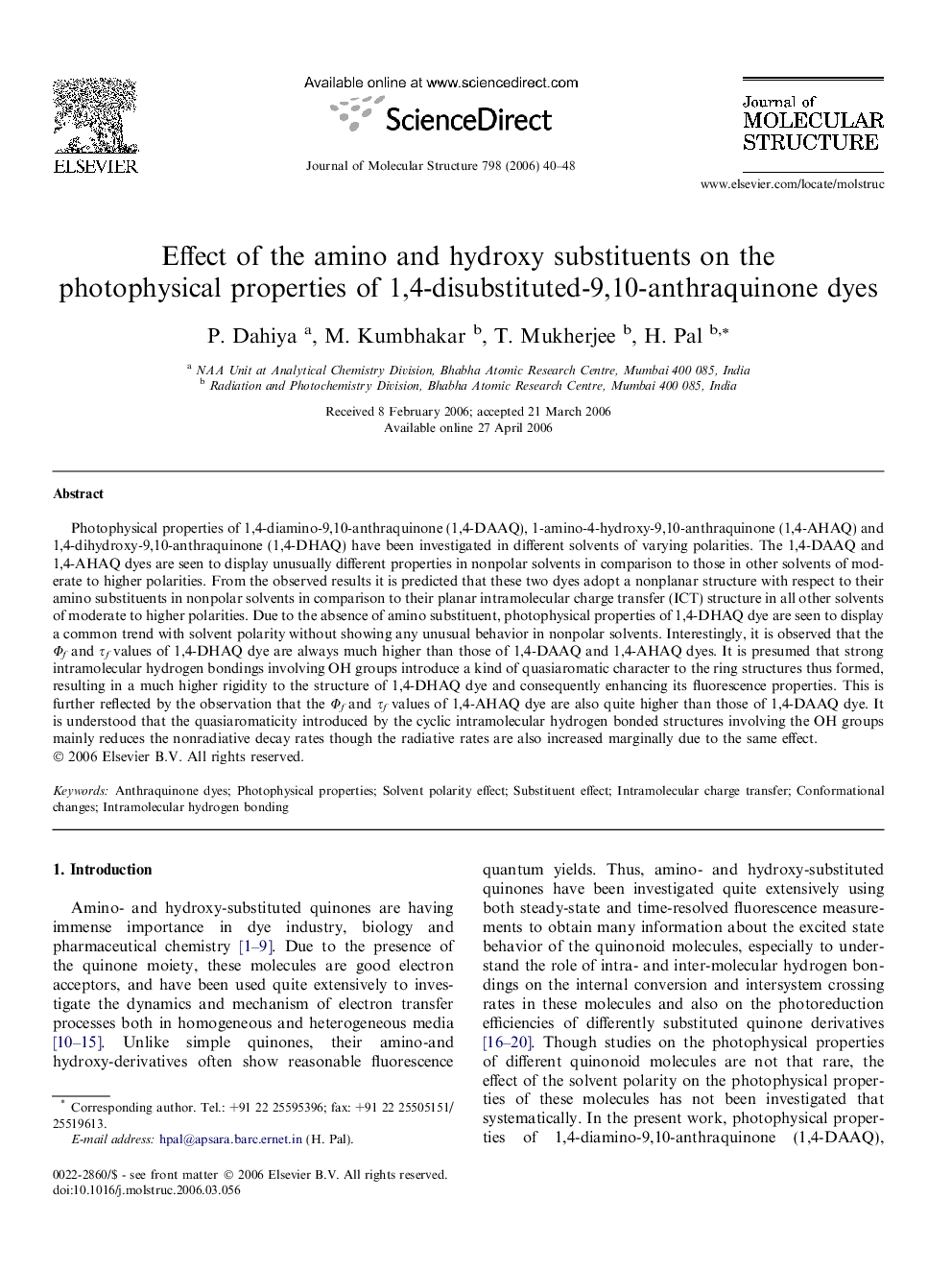| Article ID | Journal | Published Year | Pages | File Type |
|---|---|---|---|---|
| 1404531 | Journal of Molecular Structure | 2006 | 9 Pages |
Photophysical properties of 1,4-diamino-9,10-anthraquinone (1,4-DAAQ), 1-amino-4-hydroxy-9,10-anthraquinone (1,4-AHAQ) and 1,4-dihydroxy-9,10-anthraquinone (1,4-DHAQ) have been investigated in different solvents of varying polarities. The 1,4-DAAQ and 1,4-AHAQ dyes are seen to display unusually different properties in nonpolar solvents in comparison to those in other solvents of moderate to higher polarities. From the observed results it is predicted that these two dyes adopt a nonplanar structure with respect to their amino substituents in nonpolar solvents in comparison to their planar intramolecular charge transfer (ICT) structure in all other solvents of moderate to higher polarities. Due to the absence of amino substituent, photophysical properties of 1,4-DHAQ dye are seen to display a common trend with solvent polarity without showing any unusual behavior in nonpolar solvents. Interestingly, it is observed that the Φf and τf values of 1,4-DHAQ dye are always much higher than those of 1,4-DAAQ and 1,4-AHAQ dyes. It is presumed that strong intramolecular hydrogen bondings involving OH groups introduce a kind of quasiaromatic character to the ring structures thus formed, resulting in a much higher rigidity to the structure of 1,4-DHAQ dye and consequently enhancing its fluorescence properties. This is further reflected by the observation that the Φf and τf values of 1,4-AHAQ dye are also quite higher than those of 1,4-DAAQ dye. It is understood that the quasiaromaticity introduced by the cyclic intramolecular hydrogen bonded structures involving the OH groups mainly reduces the nonradiative decay rates though the radiative rates are also increased marginally due to the same effect.
